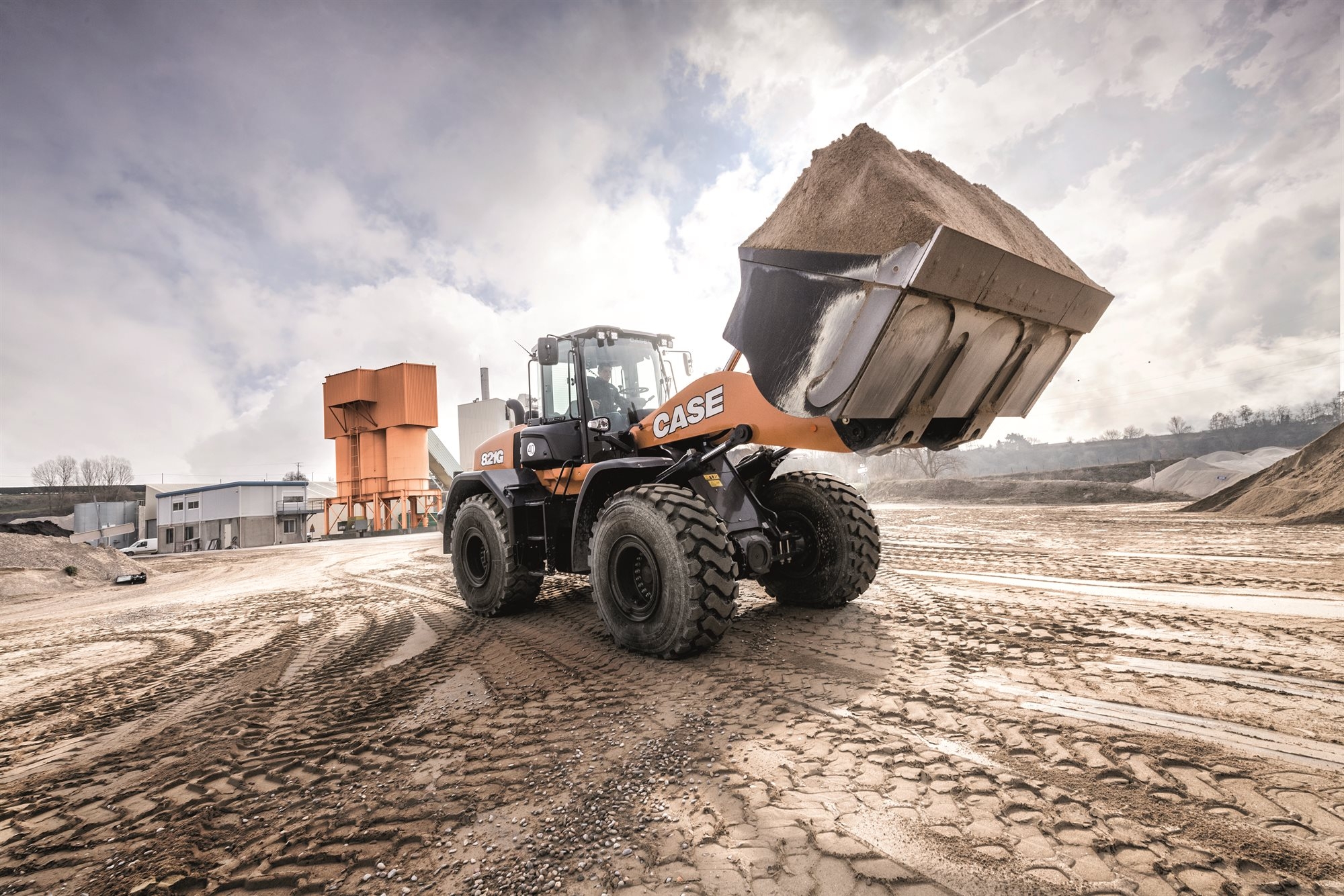How to choose a wheel loader?
The mid-range wheel loader is one of the most popular machines used in construction, inert materials extraction, waste recycling and in many industries. Choosing a specific model and its equipment is not always an easy task. We offer you some key tips that will help you choose the most suitable machine according to your needs and working conditions in your company.
How big should the machine be
The Case G-Series wheel loaders include seven models with operating weight from 12 to 30 tons, lifting capacity with a bucket from 3,9 to 10 tons and bucket capacity from 1,9 to 5,5 cubic meters. How to choose the right machines among so many models? The basic factor to start with is the operating weight of the wheel loader. This parameter is directly related to the bucket capacity, the raking force and the lifting capacity.
In order to define these three parameters, you need to answer the following questions:
- What is the relative weight and type of material to be loaded;
- How much material will be loaded per day;
- How many working cycles (full buckets) will be used to load the dump trucks used in the work (or);
- What is the loading cycle of the input hoppers serviced by the wheel loader.
The answers to these questions will help you determine the size of the loader that is suitable for your business. Our specialists will help you refine them to the maximum.

Boom configuration
Usually when working in construction or quarrying, the loading boom is equipped with a Z-bar lever system. It provides the greatest possible force of scooping from a pile of material (soil, sand, gravel, etc.). Case wheel loaders come with the Z-bar boom as part of the standard specification.
When recycling waste, it is often necessary to unload the material into high hoppers, which determines the use of boom and bucket with a bigger range. For this purpose, the Case wheel loader can be equipped with an XR boom (optional). In a number of industries, it is necessary to always lift the load in a completely horizontal position, especially if pallet forks are used. If the application is such, the Case solution is an HT boom (optional).
Environmental friendly or reliable - why not both
To meet the super strict environmental standards of Stage V of the EU, manufacturers apply various technologies. These systems, and especially their combination, lead to serious machine complications, frequent accidents, increased fuel consumption and higher maintenance costs. However, for the efficient operation of the machine, it is very important that it is equipped with a reliable and at the same time economical diesel engine.
Case relies on simpler and more reliable solutions. The G-Series wheel loaders are powered by efficient and economical diesel engines without the use of a particulate filter (DPF) and without exhaust gas recirculation (EGR). FPT units rely on Common Rail and multiple fuel injection, and the lack of an EGR valve means using only clean ambient air, which initially lows fuel consumption. The Hi-eSCR system with AdBlue is reliable and the maintenance costs are lower.
Hydrostatic or hydrodynamic transmission
For wheel loaders, the choice of drive is usually between hydrostatic or with torque converter. The experience and the conditions under which the machines are operated and maintained in Bulgaria show that the torque converter is the better option for the middle range loaders. That's why the 5-speed ProShift transmission used by Case is an excellent solution. The additional Power Inch function allows combining the smooth positioning of the machine, characteristic of the hydrostatics, with the powerful pushing force of the torque converter.

